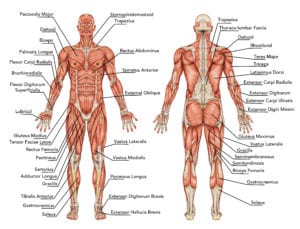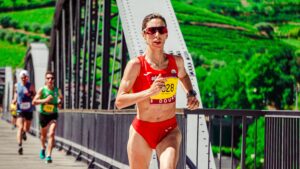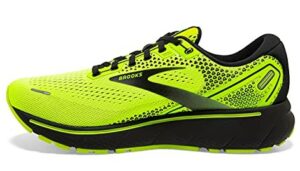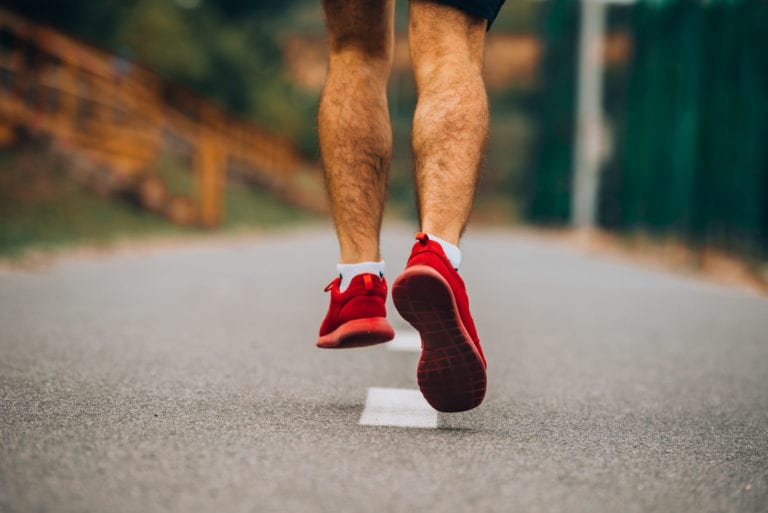Whether you’re new to running or a long-time road or trail running fan, chances are you’ve been keeping up with what the elite or professional runners are up to. But do you also dream of learning what it takes to join the ranks of the elite? If yes, you’re in luck – because we’re now going to dive into what defines an elite runner and how they train!
From marathon legends like Eliud Kipchoge and Paula Radcliffe to trail beasts like Courtney Dauwalter, Kilian Jornet, and François D’Haene, to name a few, the appeal of the elites makes us all wonder how to emulate their success. But first, let’s define an elite distance runner, the work they put in, and the elements of training that go beyond physical practice.
Who is an elite runner?

Joining the ranks of elite runners isn’t just about having innate talent and a high VO2 max. Elite runners follow a strict training plan that builds their tolerance to the effort levels and length of running required for their races. They train a lot (5-6 days a week and often with double training days) and follow specialized nutrition, hydration, physiotherapy, and sports psychology programs.
If you’re an amateur runner, chances are running is a hobby, so you have the luxury of picking your training days, program, or terrain. Only when training for ambitious goals, like your first 100-miler or a marathon PB, are you required to get very serious about training.
Elite runners are usually affiliated with one or more sponsors, from garment and shoe manufacturers to nutrition or accessories companies (think sunglasses, watches, etc.). They will have various commitments linked to this: photo shoots, filming ads and documentaries, appearing at events, and so on. When they’re not running, elite athletes fulfill different aspects of their busy schedules, partly because of these commitments.
Finally, the lifecycle of a professional athlete is more of eat – run – sleep – repeat. When not training or attending to sponsorship commitments, they’re focused on recovery. Studies have found that athletes need more sleep to recover when training at high intensity. Whereas most of us will sleep 7-8 hours a night, runners going through the peak of their training volume should get 8-10 hours of sleep every night if they can.
What is an elite running pace?
Let’s look at specific details now. Most elite runners run between 15 and 30 seconds slower every kilometer than their target marathon pace. This means that if the target is 2 hours and 30 minutes (3.33km) 4:50/km to 4:05km is normal.
Elite runners are defined by their capacity to run fast and efficiently. Marathoners at the elite level will run a mile in 4 to 5 minutes. Hicham El Guerrouj of Morocco holds the world record for running one mile in 3:43.13 (since 1999). Sifan Hassan of Ethiopia is the women’s record holder at 4:12.33, set in 2019.
However, being an elite is not just about running a fast mile. In fact, professional athletes focus 80 percent of their training time on easy running to build endurance without putting too much strain on their bodies. This may translate into pretty fast times for us mortal runners, but the key is the rate of perceived exertion. Training logs from the likes of Haile Gebrselassie, one of the most successful runners of all time and double Olympic Gold medalist, show that he does very easy recovery runs at a slow pace after putting in a hard effort earlier the same day.
Finally, pacing is key. When planning key season races, professional runners will work with their coaches to visualize the course, know exactly where the best spots are to accelerate and drop the competition and learn to dose their effort from the start to the finish so they never burn out or “hit the wall.”
This is why you see such consistent running when marathon winners cross the finish line: they’ve paced it to perfection and never ran out of energy! This is also enabled by careful nutrition planning, which takes place the weeks before the race and is sometimes tested in less important races earlier in the season.
What defines an elite runner?
There are a few elements to working at an elite level in running. These include:
- Volume and pace of running;
- Attention to a solid training regimen beyond running – including strength training, physiotherapy and massage, mental training, nutrition and hydration planning, and lots of focus on recovery;
- Running is your job – i.e., you are dedicating 100% of your time to your professional athlete career;
- Commitments around sponsors and representative bodies.
Elite runners have great running form and enviable cadence running of 180 steps per minute in their peak shape. Most runners will have a VO2 Max that’s significantly higher than the average population’s (65-80 ml/kg/min for the elites vs. 30-45 ml/kg/min for a recreational runner). Moreover, elite runners have an excellent running economy, having trained their bodies to work efficiently at lower intensities to perform well in the race distance they choose (thinking marathon and above).
Being a professional runner is part physical and part mental. Many of the world’s most successful runners report working with sports psychologists to address pre-race doubts and concerns and better plan and visualize their performances. Consistent training, in addition to careful attention to all these details, helps runners with excellent physiological abilities perform so much better than an average athlete.
How are elite runners so fast?
To understand the speed that elite runners move, we must first acknowledge their innate physical abilities. To become an elite runner, you will most likely have identified, through fitness tests from an early age, a high VO2 Max. This denotes that your heart is a powerful motor able to pump out blood in high quantities to the muscles. The stronger this engine, the more you can push that pace.
Elite runners usually have a powerful cardiovascular system aided by an impressive running economy. By moving with great efficiency, they can use less energy at the same level of effort as non-elite runners. Running efficiency can include short ground contact time (bouncing off very quickly every time their foot lands on the ground), upright body posture, which enables better oxygen intake, high cadence, etc.
Part of the running economy elements described above can be trained. Elite runners study and work to improve their running form with specialized coaches. They also do a good amount of resistance training in the gym to strengthen their muscles and work on their weaknesses. This helps them avoid injuries and sustain higher training loads.
How to become an elite runner
To become an elite runner, you should be able to run far and fast. Unfortunately, not many runners meet these qualifications or have the necessary resources and knowledge to train at high levels.
Beyond the training and dedication shown by elite runners, they also benefit from the following:
- A particularly powerful cardiovascular system measured by high VO2 Max capacity;
- Better than average running economy is shown in their running form – which is developed over time;
- Ability to spend longer than most people running at their anaerobic threshold.
Since elite runners can move much faster than most at a lower heart rate and push themselves for longer, they can perform better than their peers from a young age. This enables them to be discovered by coaches and teachers in school, moving them onto specialized training programs to develop their innate abilities further. With the added focus on their technique, nutrition, and recovery, they can start delivering better performances.
For professional athletes, the goal is to find sponsorship or join teams that can support them financially so they can truly make running their everyday job. This may mean racking up individual sponsors for trail runners or being part of national, regional, or local teams in track and field or road running.
How many miles should an elite runner run?
Running volume varies widely depending on the goal race and the level of runners. Even elites could put in fewer miles a week when returning from an injury and rely on cross-training to increase their fitness. However, most elites run around 100-140 miles per week in training for long-distance races.
It’s important to note that this high volume correlates with multiple sessions a week. Often, pros run twice a day, spreading their miles across high-intensity sessions and recovery runs. When doing a recovery run, they will move very slowly, enabling their bodies to absorb the volume and intensity they’ve gone through earlier in the day.
Of course, this volume isn’t the starting point for any runner! Just like amateurs, elite runners gradually increase their training load under the supervision of coaches and over a longer period. Training for a marathon usually goes through base-building weeks where runners focus on strength training and endurance, then move on to weeks with higher-intensity efforts before going into one or two taper weeks before racing.
Most athletes adapt their training to be more specific to their goal race the closer they get to it. For example, a mountain marathon runner will do more vertical speed work and hill running closer to the race and less flat running. On the contrary, a road runner will focus on flatter road runs at their goal race pace in the latter phases of their training.
Bottom line
Whether you’re born with an exceptional cardiovascular system and running technique, simply running several times per week will not be enough to have you enter the elites’ “private sanctuary.” You need to test your abilities in a professional, qualified setting and see if you have what it takes to become an elite.
Some trail runners don’t discover their capacity until they win a mountain run in their 20s, while some runners start as focused track athletes in school and build from there. The path to becoming an elite runner is not singular, but the commitment required once you choose it is one common element among all professionals.


























